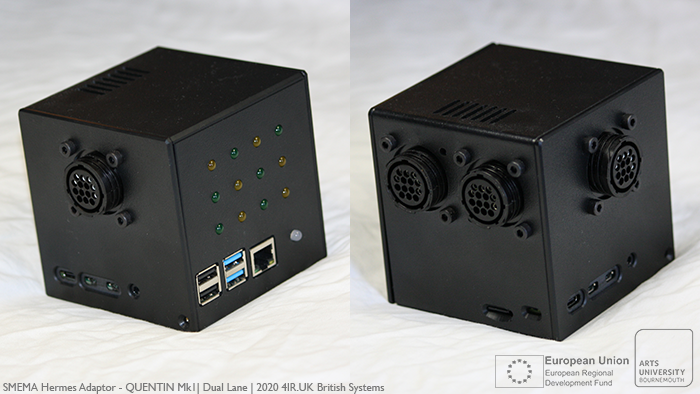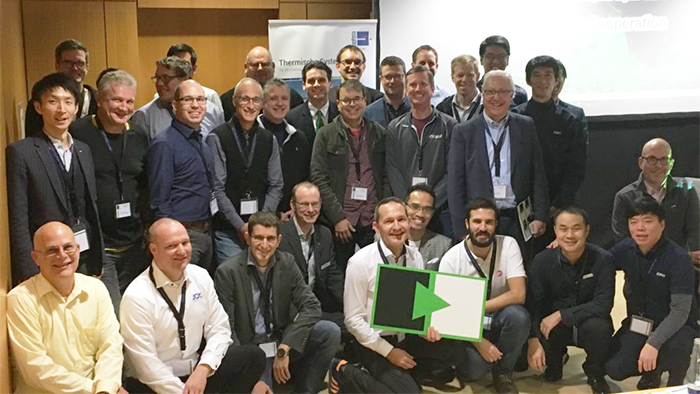Newsletter: SMEMA Hermes Adaptor Progress Update
It's been a year since we commissioned the development of an solution to convert IPC-HERMES-9852 XML messages into legacy SMEMA signals and back again.
This project wasn't driven by any particular customer, there was no 'Voice of Customer', it was a project to 'Eat our own dog food' and where improvements were needed, to 'Scratch our own itch', good business practices to encourage innovation within our organisation.
It wasn't long after publishing the MVP (Minimum Viable Product), Adaptor called Quentin on our website before we were inundated with purchase enquiries on a daily basis and also general questions regarding the Hermes Standard.
These enquiries have given us a good insight of where customers intend to use such a solution and it wasn’t a surprise to us that existing equipment vendors were first inline, often wishing to supply the solution alongside their equipment when sold. Some wished to embed the solution within their product, which we were initially uneasy of, however due to a miniaturisation project (see below) we feel is now possible. In this same vein white labeling is also possible, however it's good from a customer support point of view that end-customers understand where one product ends and another begins.
Other specification requests were around the theme of pushing the data found in the Hermes messages down other data transport mechanisms such as a serial port for conveyor width changes or via a Http request to a MES (Manufacturing Execution System). These requests were easily achieved as the solution is based on a single-board computer and uses the MultiPlug Edge Computing Platform where customisations and extensions are a given.
A requirement that did cause us to drop tools and rework the solution was around September 2019 when a request for a dual lane version was made.

This could have been achieved by simply using two instances of the Adaptor, however because of the uptake of dual lane SMT equipment and considering the embedded option, it seemed wise to pause progress and create an enlarged version with the option to use it in a single lane formation.
Knowing there is customer demand, even if these were early adopters, we took this delay to seek funding opportunities as we aren't being sponsored by a customer. After attending a business pitch event we were approached by a representative of the European Development Fund who thought our solution would align perfectly with the fund’s objectives of growing local businesses and creating new job opportunities. After lots of paperwork later, we secured the fund which reduced our costs but didn't remove them totally, so pre-orders and a careful spend has to make up the rest.
Up to this point we hadn't had any conversations with the Hermes Standard committee, only being rejected from the membership previously as we were only creating software products and no hardware at that time. The real overriding reason was they did a good job of presenting documentation and test simulators on the Hermes Standard website meaning we didn't have many questions to ask.
This soon changed at the end of 2019 when they came knocking at our door and I'm sure it was a nice surprise to see the seeds of their M2M standard being used in a new product

After this we were quickly welcomed into the Hermes Standard membership while attending the 5th Hermes Standard Initiative meeting at Productronica 2019 in Munich.
Today - February 2020
The solution at best will be run as an Edge device - that is one connected to the Internet within a secured network tunnel - but this is highly unlikely with current trends so it's more likely that it will run within an Intranet or even a dedicated siloed network for an electronics production line.
If there is one thing that rules over delivering a perfect product, it's giving great Service and Support, so great consideration is currently being conducted of how we can support the solution when it’s running on a customer's premises. This works against the trend of 'Just Ship It', or the Agile principle of 'Deliver Early and Often'.
We are pleased to report that we are approaching a point where we can remotely support the solution by using a customer's skilled technician to be the support bridge. Where an Internet connection isn't available on the production line, the solution can be plugged into a Host PC with an Internet connection for a one-click software update. All this has taken time to create but we are sure it will pay dividends in the future.
Miniaturisation
Today the dual lane version is under full internal test however we have to report a further delay as we have started a miniaturisation project to reduce the form factor of the Adaptor and make it simpler to mass manufacture. We feel that customers wanting to embed the product will benefit from this miniaturisation and we don't forecast the delay to be long as the electronics and software are identical to what it is today. Customers and development partners who are frustrated with the delays should consider our Open Call detailed below. Once we have received costing from our contract manufacturer we will begin to take pre-orders which will include a release date of the Adaptor.
Open Call
All of the delays to-date have been working towards a 'shrink-wrapped' product ready for the end-customer. If however you are a software or hardware developer, or a solutions engineer, you may be happy with receiving the product in its raw Alpha form for evaluation or further internal development within your organisation.
We are seeking individuals within organisations with the following qualities:
- Happy to purchase an Alpha bare-board version at 'cost' aligned to low volume manufacture.
- Provide feedback and happy to wait for software updates while bug fixes are prioritised.
- Navigate the Linux file system via the command line - or learn to.
- Ability to connect the Adaptor to a public facing internet connection when needed.
- Conduct communication via Email and Skype.
- Is not afraid of Software or Electronics.
If this sounds like you please contact hello@industry4.uk or an 4IR.UK contact you have already made.


